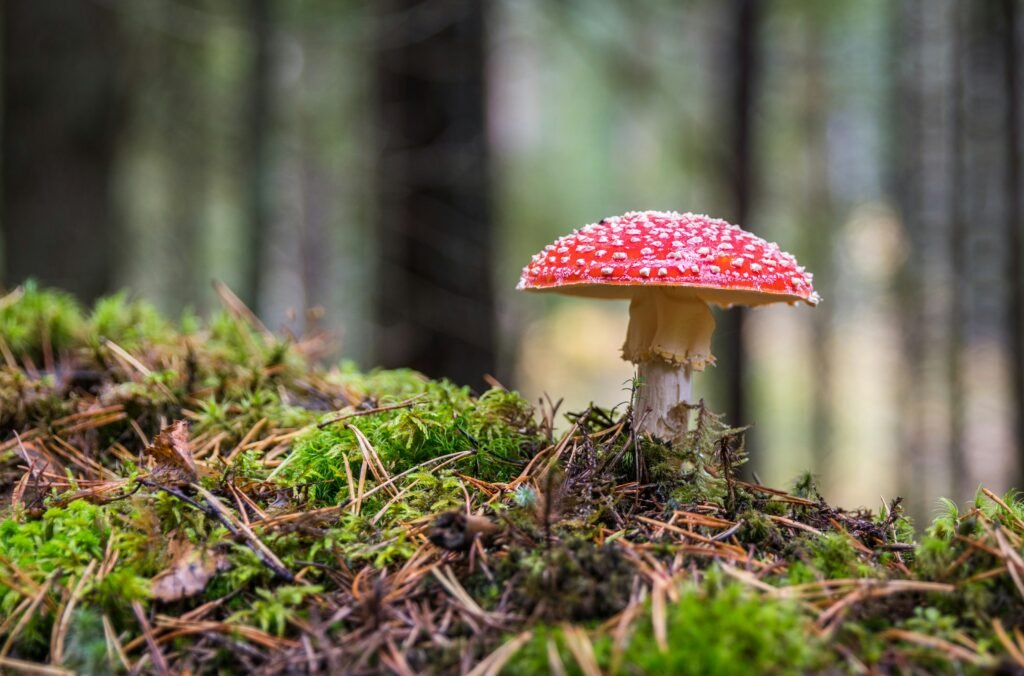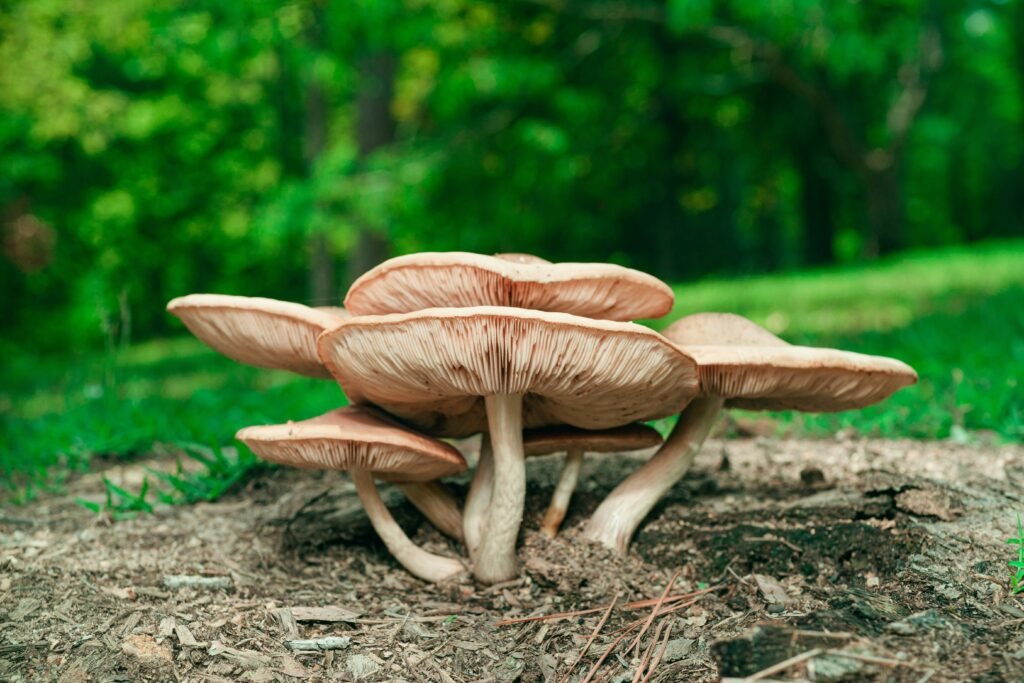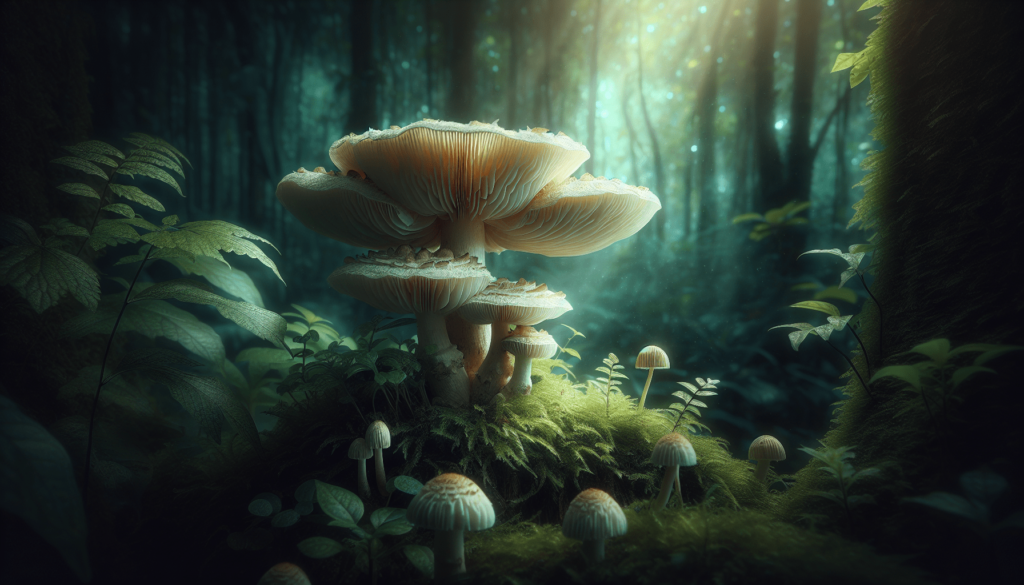Mycophilia, a captivating inclination towards fungi, is a truly remarkable phenomenon that has sparked curiosity among many nature enthusiasts. From its origins and cultural significance to its extraordinary variety and potential benefits, understanding mycophilia can open up a world of possibilities. Delve into the fascinating realm of mycophilia and uncover the intriguing secrets hidden within the fungal kingdom. Whether you’re a seasoned mycophile or simply intrigued by the wonders of nature, this article will shed light on the enigmatic charm of mycophilia.

Definition of Mycophilia
Explanation of the term
Mycophilia refers to the deep fascination and love for mushrooms. It is an intense passion for the study, cultivation, and appreciation of these unique organisms. Mycophiles are individuals who are captivated by the beauty, diversity, and mysterious nature of mushrooms. They enjoy foraging for wild mushrooms, growing them in their own homes, and exploring the various applications of mycology in different fields.
Origin of the word
The term “mycophilia” originates from the Greek words “myco,” meaning fungus, and “philia,” meaning love or strong attraction. The word was coined in the early 20th century by mycologists to describe the growing interest and enthusiasm for the study of mushrooms. It recognizes the fact that mushrooms have captivated human curiosity for centuries and have played significant roles in various aspects of human life, from art and literature to traditional medicine and sustainable living.
History of Mycophilia
Early evidence of mushroom fascination
The history of mycophilia dates back thousands of years. Ancient civilizations such as the Egyptians, Greeks, and Chinese were intrigued by mushrooms and recognized their nutritional and medicinal properties. For example, the Greeks believed mushrooms possessed magical powers, while the Chinese considered certain species as symbols of immortality. Throughout history, various writings, cave paintings, and artifacts have shown the enduring fascination that humans have had with mushrooms.
Contributions of notable mycophiles
Several notable individuals have made significant contributions to the field of mycology. One such figure is Elias Magnus Fries, a Swedish botanist who is often referred to as the “father of modern mycology.” His work in the 19th century laid the foundation for the classification and identification of mushrooms. Another influential mycophile is Beatrix Potter, the famous children’s author who was also a skilled naturalist and illustrator. Her scientific contributions to mycology include detailed studies of fungi and their life cycles.
Mycophilia as a Scientific Field
Study of fungi and their role in ecosystems
Mycophilia extends beyond mere fascination and is considered a scientific field in its own right. Mycologists study fungi and their vital roles in ecosystems. They investigate the ecological relationships between fungi and other organisms and explore the diverse functions that fungi perform, such as decomposition, nutrient cycling, and symbiotic relationships with plants. Understanding the intricacies of these relationships and the ecological roles of fungi is essential for preserving and restoring ecosystems.
Application of mycology in various industries
The study of mycology has practical implications in various industries. For example, the pharmaceutical industry utilizes mushrooms to develop new drugs and antibiotics. Certain species of fungi are known to produce compounds with potential medicinal properties, such as anticancer and antifungal agents. Mycology is also employed in agriculture, as certain types of fungi can enhance plant growth, improve soil quality, and even act as biocontrol agents against plant pathogens. Additionally, mycology plays a significant role in biotechnology, as fungi can be engineered to produce valuable compounds and enzymes.
Famous Mycophiles
Prominent individuals with a passion for mushrooms
Many famous individuals throughout history have been avid mycophiles. One such person is Charles Darwin, the renowned naturalist and evolutionary biologist. Darwin had a keen interest in fungi and conducted extensive studies on their physiology and classification. Another prominent mycophile was John Cage, an influential composer and artist who incorporated mushrooms into his artworks and performances. These individuals, along with countless others, have helped popularize mushrooms and increase awareness of their importance in various fields.
Their contributions to mycology
The contributions of famous mycophiles to mycology are significant. Charles Darwin’s research on fungi laid the groundwork for understanding their roles in ecosystems and their evolutionary relationships. He made numerous observations on fungal reproduction and dispersal, providing valuable insights into their life cycles. John Cage, on the other hand, brought attention to the aesthetic beauty of mushrooms through his art. His works often featured intricate depictions of mushrooms, encouraging others to appreciate their unique forms and textures.

Mycophilia in Art and Literature
Depictions of mushrooms in paintings and sculptures
Mushrooms have served as subjects of artistic expression throughout history. Paintings, sculptures, and other art forms have depicted mushrooms in various ways, reflecting the fascination and appreciation for these organisms. For instance, the Dutch Golden Age painters, such as Jan Brueghel the Elder, often included mushrooms in their still-life compositions, showcasing their vibrant colors and delicate structures. In modern times, artists like Salvador Dalí and René Magritte incorporated mushrooms into their surreal and thought-provoking artworks, adding symbolism and mystery to their pieces.
Mushrooms as literary symbols and metaphors
Mushrooms have also found their place in literature as rich symbols and metaphors. Writers have used mushrooms to represent growth, transformation, and the mysterious aspects of life. One notable example is Lewis Carroll’s “Alice’s Adventures in Wonderland,” where the mushroom plays a significant role in Alice’s journey and her changing size. The mushroom’s transformative properties capture the sense of wonder and the surreal elements often associated with mushrooms in literature.
Mycophilia in Traditional and Indigenous Cultures
Mushroom use in rituals and ceremonies
Mushrooms hold cultural and spiritual significance in many traditional and indigenous cultures around the world. For example, in certain Indigenous American cultures, mushrooms like the Amanita muscaria are used in religious ceremonies due to their hallucinogenic properties. These ceremonies aim to connect individuals with the spiritual realm and are part of a longstanding cultural tradition. Similarly, in some Siberian shamans’ practices, mushrooms have been used for their perceived medicinal and spiritual properties.
Ethnomycology and indigenous knowledge
The study of ethnomycology focuses on the relationship between mushrooms and traditional cultures. It seeks to understand the knowledge and practices surrounding mushrooms in indigenous communities. Ethnomycological research sheds light on the various uses of mushrooms for food, medicine, and cultural rituals by different societies. The valuable knowledge held by indigenous cultures regarding specific mushrooms and their properties contributes to our understanding of their ecological roles and potential benefits.

Health Benefits and Medicinal Uses of Mushrooms
Nutritional value and potential medicinal properties
Mushrooms are not only delicious but also offer numerous health benefits. They are low in calories and fat, making them a nutritious addition to any diet. Certain mushrooms, such as shiitake and maitake, are rich in vitamins, minerals, and antioxidants, which can support immune function and overall well-being. Additionally, many mushrooms have been used in traditional medicine for their potential medicinal properties, such as boosting the immune system, reducing inflammation, and even preventing certain types of cancer.
Exploring potential applications in healthcare
The medicinal potential of mushrooms is an area of ongoing research. Scientists are studying the bioactive compounds found in mushrooms, such as beta-glucans and triterpenoids, for their potential therapeutic applications. Some of the areas of interest include developing new antiviral drugs, improving treatments for autoimmune diseases, and exploring the role of mushrooms in gut health. As scientific knowledge expands, mushrooms may become an integral part of future healthcare practices.
Mycophilia and Sustainable Living
Mushroom cultivation for food and alternative materials
Mycophilia plays a key role in sustainable living practices. Mushroom cultivation offers a sustainable alternative to traditional agriculture, requiring fewer resources and generating less waste. Many edible mushroom varieties, such as oyster mushrooms and shiitake, can be grown on various organic substrates like agricultural by-products or even coffee grounds. Additionally, mushrooms are increasingly being explored as a potential alternative material source, with the development of mycelium-based products for packaging, construction materials, and even leather substitutes.
Role of mycology in sustainable agriculture
Mycology contributes to sustainable agriculture practices in multiple ways. Fungi can enhance soil health by breaking down organic matter and releasing essential nutrients for plant uptake. Certain mycorrhizal fungi form symbiotic relationships with plant roots, improving nutrient absorption and water retention. This allows for reduced fertilizer and irrigation requirements, minimizing the environmental impact of agricultural practices. Furthermore, the cultivation of edible mushrooms can provide a sustainable source of nutritious food, reducing reliance on resource-intensive livestock farming.

Mycophilia and Foraging
The thrill of mushroom hunting
Foraging for wild mushrooms is a beloved activity among mycophiles. The thrill of discovering hidden treasures in nature, identifying edible species, and connecting with the environment is a deeply rewarding experience. Mushroom hunting allows individuals to explore diverse ecosystems, learn about different mushroom species, and develop a deeper understanding of their habitats and ecological roles. It is an adventure-filled activity that promotes a sense of connection to the natural world.
Safety considerations and best practices
While foraging for mushrooms can be exciting, it is crucial to prioritize safety. Some mushrooms are poisonous or deadly, and misidentification can have severe consequences. Mycophiles must educate themselves about different mushroom species, learn to identify edible varieties accurately, and understand the potential risks. It is recommended to join local mycological societies or participate in guided forays to learn from experienced mushroom enthusiasts. Following ethical foraging practices, such as leaving some mushrooms undisturbed or collecting only what is needed, ensures the sustainability of wild mushroom populations.
Growing Your Mycophilia
Tips for cultivating a love for mushrooms
If you’re looking to cultivate your own mycophilia, there are several ways to get started. Begin by exploring local parks or forests to observe and photograph different mushrooms. Joining a mycology club or attending mushroom forays and workshops can provide valuable knowledge and networking opportunities. Consider experimenting with growing your own mushrooms at home using kits or by inoculating logs or substrates. Engaging with literature and online resources related to mycology, such as field guides and scientific papers, can further deepen your understanding and appreciation for these fascinating organisms.
Resources for learning and exploring the world of mycology
There are abundant resources available for those interested in diving into the world of mycology. Books like Paul Stamets’ “Mycelium Running: How Mushrooms Can Help Save the World” offer comprehensive introductions to mushroom cultivation, ecological roles of fungi, and potential applications in various industries. Online platforms, such as websites, forums, and social media groups dedicated to mycology, provide opportunities to connect with fellow mycophiles, share knowledge, and seek guidance. Local botanical gardens, universities, and environmental organizations often host workshops, lectures, and forays, creating spaces for learning and hands-on exploration.
In conclusion, mycophilia encompasses a deep passion for mushrooms that extends beyond fascination and into the realm of scientific study, cultural significance, and sustainable living practices. From ancient civilizations to modern-day enthusiasts, mushrooms have captivated humans throughout history. Through art, literature, traditional practices, and scientific research, mycophiles have contributed to the growing understanding of mushrooms’ ecological, health, and cultural significance. By embracing mycophilia, individuals can cultivate a love for mushrooms, promote sustainable practices, and explore the diverse and awe-inspiring world of mycology.

